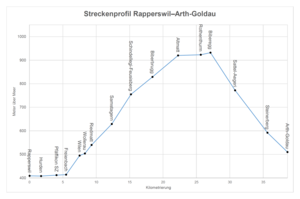Pfäffikon SZ – Arth-Goldau railway line
| Pfäffikon SZ – Arth-Goldau as of 2005 |
|||||||||||||||||||||||||||||||||||||||||||||||||||||||||||||||||||||||||||||||||||||||||||||||||||||||||||||||||||||||||||||
|---|---|---|---|---|---|---|---|---|---|---|---|---|---|---|---|---|---|---|---|---|---|---|---|---|---|---|---|---|---|---|---|---|---|---|---|---|---|---|---|---|---|---|---|---|---|---|---|---|---|---|---|---|---|---|---|---|---|---|---|---|---|---|---|---|---|---|---|---|---|---|---|---|---|---|---|---|---|---|---|---|---|---|---|---|---|---|---|---|---|---|---|---|---|---|---|---|---|---|---|---|---|---|---|---|---|---|---|---|---|---|---|---|---|---|---|---|---|---|---|---|---|---|---|---|---|
| Timetable field : | 670 | ||||||||||||||||||||||||||||||||||||||||||||||||||||||||||||||||||||||||||||||||||||||||||||||||||||||||||||||||||||||||||||
| Route length: | 34.58 km | ||||||||||||||||||||||||||||||||||||||||||||||||||||||||||||||||||||||||||||||||||||||||||||||||||||||||||||||||||||||||||||
| Gauge : | 1435 mm ( standard gauge ) | ||||||||||||||||||||||||||||||||||||||||||||||||||||||||||||||||||||||||||||||||||||||||||||||||||||||||||||||||||||||||||||
|
|||||||||||||||||||||||||||||||||||||||||||||||||||||||||||||||||||||||||||||||||||||||||||||||||||||||||||||||||||||||||||||
The Pfäffikon SZ – Arth-Goldau line is the only line built by the Swiss Southeast Railway . The two subsequent lines, the line over the Seedamm from Rapperswil and the Wädenswil – Einsiedeln railway line , were built by the two predecessor companies Wädenswil-Einsiedeln-Bahn and Zürichsee – Gotthardbahn , with the Pfäffikon SZ – Arth-Goldau line between Saturdayern and Biberbrugg the one at that time already used route. Since 2001, the 34.58-kilometer route has been owned by the Swiss Southeast Railway , created through the merger with the Bodensee-Toggenburg-Bahn , and has been electrified with single-phase AC voltage of 15 kilovolts and 16.7 (16 2/3) Hertz since May 15, 1939 .
history
The route was created as an access to the Gotthard Railway . Due to the local conditions, it was built based on the Wädenswil – Einsiedeln route with a gradient of 50 per mille. The line was approved on July 29, 1891 and officially opened on July 31. The official approval for regular operation was not received until August 4th. This discrepancy can be explained by the fact that the 600th anniversary of the Swiss Confederation took place between July 31 and August 3, 1891 in Schwyz , and therefore special trains already ran to this celebration. The first scheduled train ran on August 8, 1891. The first permit was subject to conditions and was therefore limited in time. The definitive permit was only granted after the official bridge test in 1892, as reworking had to be carried out on some bridges.
For a long time, the financing of electrification was not secured. It was not until the General Assembly on July 6, 1938 that the financing could be approved. Construction of the catenary and transmission lines began immediately, as the plan was to finish the line before Landi 39 . The electricity could be obtained at cost price from the Etzelwerke of the SBB. The show of strength was successful and the lines were electrified within 10 months. A small celebration took place on May 13th. With the timetable change on May 15, 1939, electrical operation should have started on the entire network of the Südostbahn. At that time, however, the railway did not have its own electric vehicles. The eight railcars ( CFZe 4/4 and BCFZe 4/4 ) ordered in 1938 had not yet been delivered.
The Biberegg sports stop was opened in 1935 and converted into a normal stop in 1979. In 1974 the Riedmatt stop was opened. In 1988 the Freienbach stop was expanded to become a crossing station. Due to the increase in traffic, the line between Saturdayern and Schindellegi-Feusisberg had to be expanded to double-lane in 1992.
Deformations occurred in the lower Lustenau tunnel (or tunnel no. 2). Caused by the pressure on the slope and the degradation on the valley side as a result of the relocation of the canton road of the railing rib pierced by the tunnel. The deformations became so severe at the beginning of 1975 that an intervention was inevitable. The tunnel was blown up in May 1975 and replaced by a retaining wall. The replacement service lasted 12 days.
Since October 15, 1977, the Pfäffikon SZ – Arth-Goldau line has been equipped with at least the former SBB Profile I, i.e. a weight per meter of 46 kg / m. The restrictions on axle and meter loads could then be lifted. In 2018, all vehicles up to and including route class D4 are permitted on the route .
Accidents
On May 17, 2003, an empty composition of the Südostbahn (SOB) in Pfäffikon SZ crashed into a standing InterRegio train Basel - Chur of the SBB . Although the entry signal had announced the entrance to the occupied track to the SOB- NPZ coming from Saturday , the driver only noticed the standing Interregio shortly before the impact. 18 people, mainly in the Interregio, were injured. Major property damage occurred to the vehicles.
On May 9, 2014, the Voralpen-Express 2435 in Sattel - Aegeri crossed a signal indicating a stop. The Integra-Signum train protection system triggered an emergency brake , but the train only came to a stop 100 meters after the signal was closed. A car driving over a level crossing with the barriers still open was hit by the Re 446 015 locomotive . The driver was injured. No stop was planned at the Sattel-Ägeri station, which is not equipped with ZUB train protection . Nevertheless, the exit signal was closed.
literature
- G. Oswald and K. Michel: The southeast railway, history of a private railway. Orell Füssli Publishing House. Zurich 1991. ISBN 3-280-02048-4 .
Individual evidence
- ↑ a b G. Oswald and K. Michel Die Südostbahn, History of a Private Railway Orell Füssli Verlag Zurich, 1991, ISBN 3-280-02048-4 , page 159.
- ↑ according to map FDV AB section 5.1 chapter 4.2.4, as of July 1, 2017.
- ↑ Collision in Pfäffikon SZ . In: Swiss Railway Review . No. 7 . Minirex, 2003, ISSN 1022-7113 , p. 291 .
- ^ Walter von Andrian: Collision with open barriers . In: Swiss Railway Review . No. 6 . Minirex, 2014, ISSN 1022-7113 , p. 270 .
